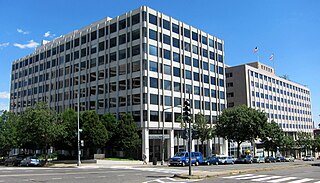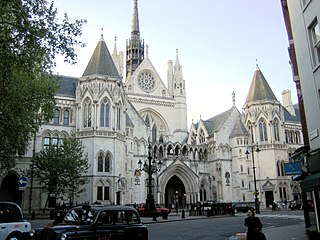
A charitable trust is an irrevocable trust established for charitable purposes. In some jurisdictions, it is a more specific term than "charitable organization". A charitable trust enjoys varying degrees of tax benefits in most countries and also generates goodwill. Some important terminology in charitable trusts includes the term "corpus", referring to the assets with which the trust is funded, and the term "donor," which is the person donating assets to a charity.

Trustee is a legal term which, in its broadest sense, is a synonym for anyone in a position of trust and so can refer to any individual who holds property, authority, or a position of trust or responsibility for the benefit of another. A trustee can also be a person who is allowed to do certain tasks but not able to gain income. Although in the strictest sense of the term a trustee is the holder of property on behalf of a beneficiary, the more expansive sense encompasses persons who serve, for example, on the board of trustees of an institution that operates for a charity, for the benefit of the general public, or a person in the local government.
A foundation is a type of nonprofit organization or charitable trust that usually provides funding and support to other charitable organizations through grants, while also potentially participating directly in charitable activities. Foundations encompass public charitable foundations, like community foundations, and private foundations, which are often endowed by an individual or family. Nevertheless, the term "foundation" might also be adopted by organizations not primarily engaged in public grantmaking.
City Bridge Foundation is the working name of the historic Bridge House Estates, which originated in the late eleventh century and was formally established by royal charter in 1282 by the City of London Corporation in London, England. It is a registered charity governed by a single trustee, the City of London Corporation, represented by the City Bridge Foundation Board.
In Christianity, a collegiate church is a church where the daily office of worship is maintained by a college of canons, a non-monastic or "secular" community of clergy, organised as a self-governing corporate body, headed by a dignitary bearing a title which may vary, such as dean or provost.

A charitable organization or charity is an organization whose primary objectives are philanthropy and social well-being.
A parochial church council (PCC) is the executive committee of a Church of England parish and consists of clergy and churchwardens of the parish, together with representatives of the laity. It has its origins in the vestry committee, which looked after both religious and secular matters in a parish. It is a corporate charitable body.
National Museums Liverpool, formerly National Museums and Galleries on Merseyside, comprises several museums and art galleries in and around Liverpool in Merseyside, England. All the museums and galleries in the group have free admission. The museum is a non-departmental public body sponsored by the Department for Culture, Media and Sport (DCMS) and an exempt charity under English law.
A vestry was a committee for the local secular and ecclesiastical government of a parish in England, Wales and some English colonies, which originally met in the vestry or sacristy of the parish church, and consequently became known colloquially as the "vestry". At their height, the vestries were the only form of local government in many places and spent nearly one-fifth of the budget of the British government. They were stripped of their secular functions in 1894 and were abolished in 1921.

Nesta is a British foundation, registered as a charity, which supports innovation.

The Carnegie Trust for the Universities of Scotland is a charitable trust established by Andrew Carnegie in 1901 for the benefit of the universities of Scotland, their students and their staff.

Perpetual curate was a class of resident parish priest or incumbent curate within the United Church of England and Ireland. The term is found in common use mainly during the first half of the 19th century. The legal status of perpetual curate originated as an administrative anomaly in the 16th century. Unlike ancient rectories and vicarages, perpetual curacies were supported by a cash stipend, usually maintained by an endowment fund, and had no ancient right to income from tithe or glebe.
A foundation in the United States is a type of charitable organization. Though, the Internal Revenue Code distinguishes between private foundations and public charities. Private foundations have more restrictions and fewer tax benefits than public charities like community foundations.
An exempt charity is an institution established in England and Wales for charitable purposes which is exempt from registration with, and oversight by, the Charity Commission for England and Wales.

Charitable trusts in English law are a form of express trust dedicated to charitable goals. There are various advantages to charitable trust status, including exemption from most forms of tax and freedom for the trustees not found in other types of English trusts. To be a valid charitable trust, the organization must demonstrate both a charitable purpose and a public benefit. Applicable charitable purposes are normally divided into categories for public benefit, including the relief of poverty, the promotion of education, the advancement of health and saving of lives, the promotion of religion, and all other types of trusts recognized by the law. There is also a requirement that the trust's purposes benefit the public, and not simply a group of private individuals.

The parish with its parish church(es) is the basic territorial unit of the Church of England. The parish has its roots in the Roman Catholic Church and survived the English Reformation largely untouched. Each is within one of 42 dioceses: divided between the thirty of the Province of Canterbury and the twelve of that of York. There are around 12,500 Church of England parishes. Historically, in England and Wales, the parish was the principal unit of local administration for both church and civil purposes; that changed in the 19th century when separate civil parishes were established. Many Church of England parishes still align, fully or in part, with civil parishes boundaries.
In philanthropy, donor intent is the purpose, sometimes publicly expressed, for which a philanthropist intends a charitable gift or bequest. Donor intent is most often expressed in gift restrictions, terms, or agreements between a donor and donee, but it may also be expressed separately in the words, actions, beliefs, and giving practices of a philanthropist. Donor intent is protected in American law regarding charitable trusts, and trustees' primary fiduciary obligation is to carry out a donor's wishes.

The Richmond Charities is an almshouse charity based in the London Borough of Richmond upon Thames with its origins dating back to 1600. The charity provides affordable housing for people in housing need. It also administers two relief-in-need welfare charities, a relief-in-sickness charity and a very small charity that awards small quarterly grants to four deserving spinsters.

The Reports on the Education of the Lower Orders were published between 1816 and 1819 by a select committee of the House of Commons under the chairmanship of Henry Brougham. The committee made only the second ever government inquiry into education, as it comprehensively investigated the provision of education for poor working class children in Great Britain during the early 19th century. The reports exposed the inadequate provision of schooling and the maladministration of charitable funds given for educating the poor. It was eventually used to justify the first state intervention into English and Welsh education in 1833 when the Treasury started to help fund the badly needed construction of new school-houses through an annual grant. It also started a parliamentary commission of inquiry into improving charitable foundations which eventually led to formation of present-day charities commission.
United St Saviour's Charity is a charity in the London Borough of Southwark, London, England. Its purpose is to alleviate poverty in Southwark by providing housing for older persons in their almshouses, by making charitable grants to local charities and organisations, direct charitable services and research and influencing activities. It was founded as the Corporation of Wardens of the Parish of St Saviour, Southwark in 1541.










